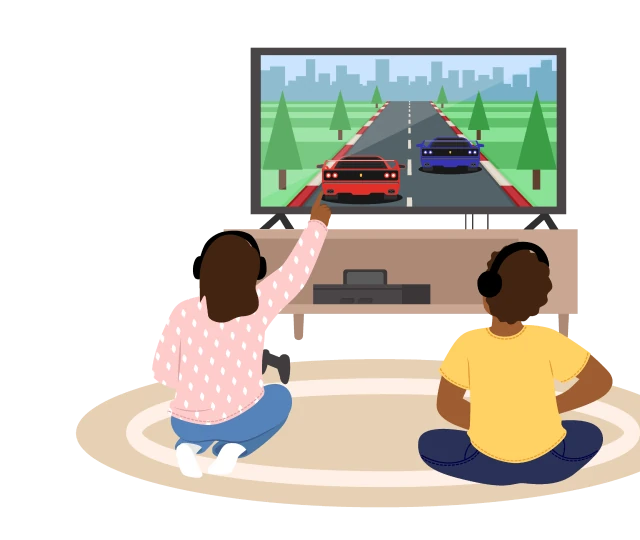Family Gaming Guide

Establishing healthy gaming habits for kids can be tricky. That’s why we’ve created this user-friendly guide to help you navigate the world of video games and set smart boundaries.
Talk with your kids to establish boundaries around screen time, in-game purchases, online communication, and more.
Talk with your kids to establish boundaries around screen time, in-game purchases, online communication, and more.

Keep multi-player online games fun by setting expectations about who your kids engage with online.

Create individual accounts and follow our step-by-step advice for how to set up parental controls for each child.
How much is too much? Review the research and learn how to start a dialogue with your kiddo.
Teach your kids how to protect their information online now and that skill will last a lifetime.
Talk with your kids to establish boundaries around screen time, in-game purchases, online communication, and more.
Keep multi-player online games fun by setting expectations about who your kids engage with online.

How much is too much? Review the research and learn how to start a dialogue with your kiddo.
Talk with your kids to establish boundaries around screen time, in-game purchases, online communication, and more.

Create individual accounts and follow our step-by-step advice for how to set up parental controls for each child.
Teach your kids how to protect their information online now and that skill will last a lifetime.
Multiple gamers at home?
Different kids may require different rules. Here are some things to consider:
Set age-based rules
Base the rules on each child’s age and maturity level and set up individual accounts for each child to enforce them.
Sign out of accounts
Remind older kids (and parents!) to sign out when they’re done playing so younger siblings don’t stumble across inappropriate content.
Get some headphones
Keep it family-friendly. Use headphones while gaming in shared spaces to shield younger kids from mature language, violence, or trash talk.










